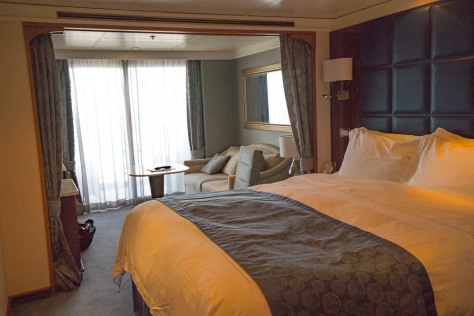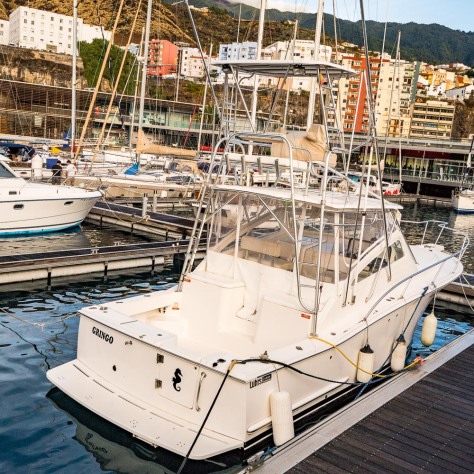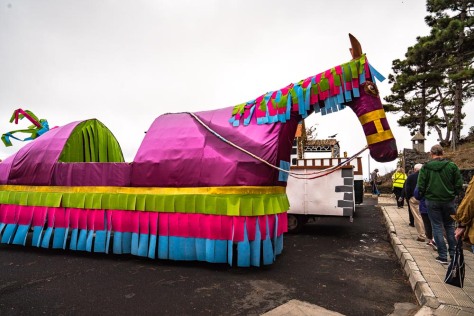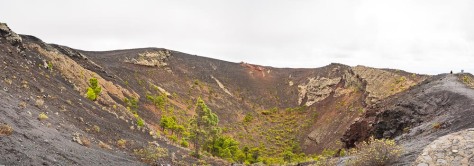October 26, 2016:
This morning, we docked at dawn in the Canary Islands, on the island of La Palma. The port is located in the town of Santa Cruz de la Palma. Even though we’re only about 130 miles off the coast of Morocco, the islands belong to Spain, stretching back to Christopher Columbus’ time. Like to Galapagos, these islands are all volcanic islands, and there is black balsamic rock everywhere.

First order of business, Jim and I got off the ship so we could photograph it for you, dear Readers. 



On the way off the boat, we spied what may be our future boat.

We took a walk through the old town, which is charming! The most notable architectural feature is the lovely carved wooden balconies decorating colonial buildings, many of which are painted beautiful pastel colors.






Then it was time for our excursion to see the volcanoes and vineyards of La Palma. Our drive took us south along the eastern coast of the island. The topography is very dramatic with steep volcanic peaks rising right up from the water. The flora is amazing, with banana palms on the lower slopes terraced down near the sea, and then giving way to grape vineyards terraced in among the lava rocks, with Canary pines towering above them.


Our first stop was at a group collective winery known as Bodegas Teneguía. The town which host the wine collective is Fuencaliente, meaning hot springs. We first saw the cellar for the collective, then had a nice wine tasting. The interesting thing is that wine from the Canary Islands has been prized in Europe since the Renaissance. The most notable wine is a grape called Malvasia, but which was known as Malmsey wine in England. The grape harvest (la Vendimia) ended about a week ago here, but the harvest was awful this year, because strong winds and a hot climate descended on the area. The normal harvest for the island is about 400,000 bottles; this year’s harvest will barely total 100,000 bottles. Nonetheless, the village still celebrated the harvest with their handmade floats.


From there, we drove to the Volcán San Antonio, to hike up to the rim to see the giant caldera. This is the most recently active volcano in the Canary islands (not counting underwater eruptions. 45 years ago today, this bad boy last blew his stack, and created lists more coastline to turn into banana plantations. I’m sure you can agree; this looks pretty much like a lunar landscape.





Finally, we stopped at a ceramics workshop, to view the artisans at work (and stop at la tienda). Candidly, though, the views were more captivating than the pottery!






Our tour now over, we returned to the ship. Luckily, we got back just as it was beginning to spit rain. But the projected downpour did not materialize, and we set sail at 8:00 p.m. for tomorrow’s port of call; Santa Cruz de Tenerife, still in the Canary Islands.
